Advantages and Disadvantages of Data Structure
What is Data Structure?
Data is one of the most incredible things anyone could expect to find for any business or organization that has to get by and rise to the top in today's competitive and trying market. The more data available, the more options and solutions to problems and snags become available. This data presents a few strong requirements, including maintaining the data unified and available. All of the data on the earth won't benefit a firm unless it can access the data and translate it into a valuable resource.
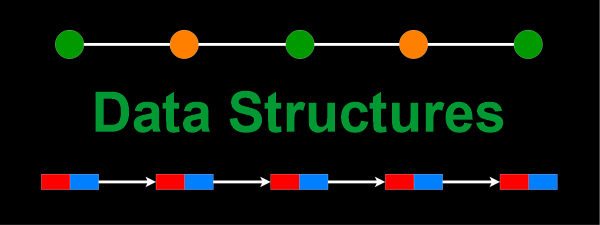
A data structure isn't merely used to organize data. It is also used to manage, restore, and store data. Several fundamental and high-level types of data structures are used in almost every programmed or programming framework that has been produced. As a result, we should have much knowledge about data structures.
Data structures are essential components of personal computers used to handle data in memory. They are critical to properly sorting, processing, accessing, and storing data. This, however, is not the conclusion of the narrative. Different data structures have unique traits, features, applications, benefits, and downsides.
Classification of Data Structure
A data structure allows one to organize and handle a massive amount of data in a relatively short period. In our daily lives, the data structure serves a variety of functions. Several data structures are used to solve various numerical and intelligence problems. Let's have a look at several data structures that are used in various situations.
- Linear Data Structure: The data structure in which data components are organized successively or directly, where every component is connected to its past and next neighboring components, is known as a straight data structure.
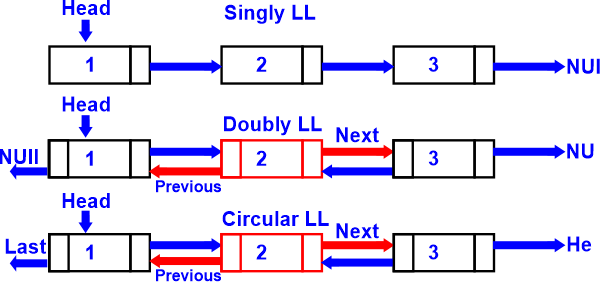
- Static Data Structure: The memory size of a static data structure is enough. A static data structure makes it easier to access the components.
- Dynamic Data Structure:The size of the dynamic data structure is not fixed. It is arbitrarily updated throughout the runtime, which may be considered beneficial regarding the code's memory (space) complexity.
- Non-Linear Data Structure: Nonstraight data structures are those in which the data components are not placed sequentially or directly. We can't browse all of the components in a single pass in a nonstraight data structure.
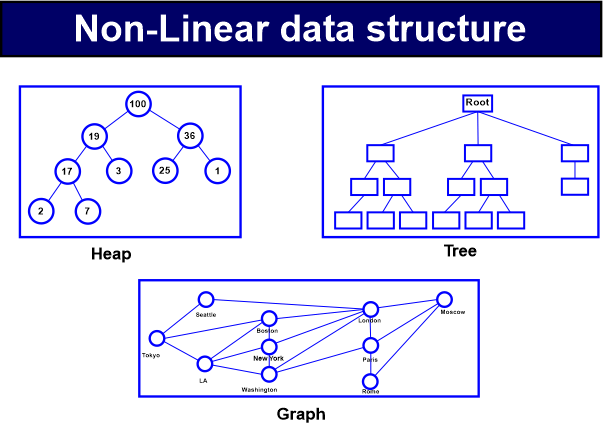
Need for Data Structure
The data structure and the computation blend are compared. The data display should be simple so that the engineer and the customer can carry out the activity effectively.
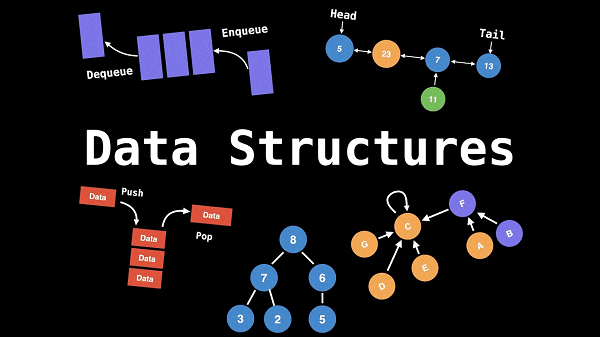
Data structures simplify sorting, retrieving, making do, and storing data. Here is a list of the data required.
- It is trivial to change the data structure.
- It requires minimal investment.
- Conserve memory capacity.
- Data visualization is straightforward.
- Simple access to the massive database.
Usage of Data Structure
Data structures are responsible for distinct data kinds (ADT). The ADT characterizes the data type's legitimate type. The data structure performs the data type's real type. Different forms of data structures are appropriate for various types of applications, and some are quite specific to precise tasks. For example, social databases frequently employ B-tree files to retrieve data, but compiler executions typically use hash tables for hunting for identifiers.
Data structures efficiently manage large amounts of data for applications such as large databases and web ordering services. Typically, proficient data structures are required for good computation planning. Some traditional planning methodologies and programming languages emphasize data structures rather than calculations as the most important aspect of programming planning. Data structures can be used to coordinate the storage and retrieval of data stored in both primary and secondary memory.
The program is divided into two sections: the front end and the back end. The front end provides a connection point, while the back end is a database that stores client records. There might be millions or trillions of clients. If we need to find the record of a specific group of customers, we use a searching approach, which is a procedure on the data structure.
Advantages of Data Structure
- The data structure is a good solution for storing data on framework.
- Data structures make it easier for us to handle data.
- Data structures also aid us in efficiently storing data on circles so that we can recover the data.
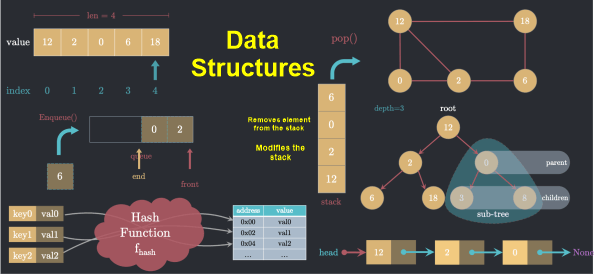
- Data structures are critical for planning computations.
- As we have seen, data structures are a mechanism for arranging data into a specified structure. Currently, the speed of program execution depends on the type of data structure used.
- Data structures allow us to reuse data. We can create a few data sets in certain organizations and put them in libraries for use by various clients.
- Charts are data structures that let us visualize, interact with, and model real-world challenges.
- Trees are data structures that let us see, carry out, and operate with hierarchical data sets. For example, once the customer has looked through a, they will look through b, commonly used in searching related fields.
- Data structures provide data deliberation so that the client does not have to be concerned with how the data is stored in the framework.
- Data structures provided by various programming languages accompany implicit capabilities (or methods) that let us use the specific database more productively.
- When working with large data sets, the program's effectiveness is largely determined by the type of data structure used. As a result, selecting a suitable data structure is critical.
- Data structures are also used in the database administration framework (DBMS) industry for creating a list, storing data using B and B+ trees, and so on.
- Data structures serve a variety of functional objectives, such as dynamic memory distribution, process planning, record framework association, word reference, and so on.
Disadvantages of Data Structure
- The more the application or data structure involved in creating and maintaining the application, the greater the labor supply. This can increase the expense of maintaining data structures. The more complex the program, the more similar data structures will be involved. For example, we may access data structures such as a cluster, line, stack, connected list, tree, chart, etc. As a result, you may need a few professionals to create and maintain the program.
- A fraction of the data structures is difficult for another software developer to deal with.
- Because of the intricateitsture, certain data structures provide slower data access.
- If difficult concerns or problems arise, we may expect professionals to handle the situation.
- To deal with the actions associated with the data structure, an application employing data structure necessitates profoundly skilled, proficient assets. Consider the cluster model we discussed previously. If we want to acquire the components of the above show in rising or falling order, we should grasp arranging technique computations like addition sort, bubble sort, and so on. A good coder, on the other hand, may plan their organizing calculation. There may also be additional sophisticated actions to be conducted that will necessitate the involvement of committed professionals.
- Planning data structures without preparation is extremely difficult and may need sophisticated calculations and significant effort in addition to tests (quality testing).
- Larger applications necessitate data structures within each other, just like the hub of a chart is made up of an exhibit or a rundown. As a result, maintenance is both puzzling and costly in such cases.
- Planning your data structure may need sophisticated calculations and a significant amount of effort and testing to ensure that they are complete and ready for hierarchical purposes. This will result in increased costs. Furthermore, when progress is completed, it may be discovered that the new data structure designed isn't as successful as expected.
Conclusion
Data structures are simply a major technique for organizing and storing data on the PC for effective usage and management, depending on the situation.
|


 For Videos Join Our Youtube Channel: Join Now
For Videos Join Our Youtube Channel: Join Now













